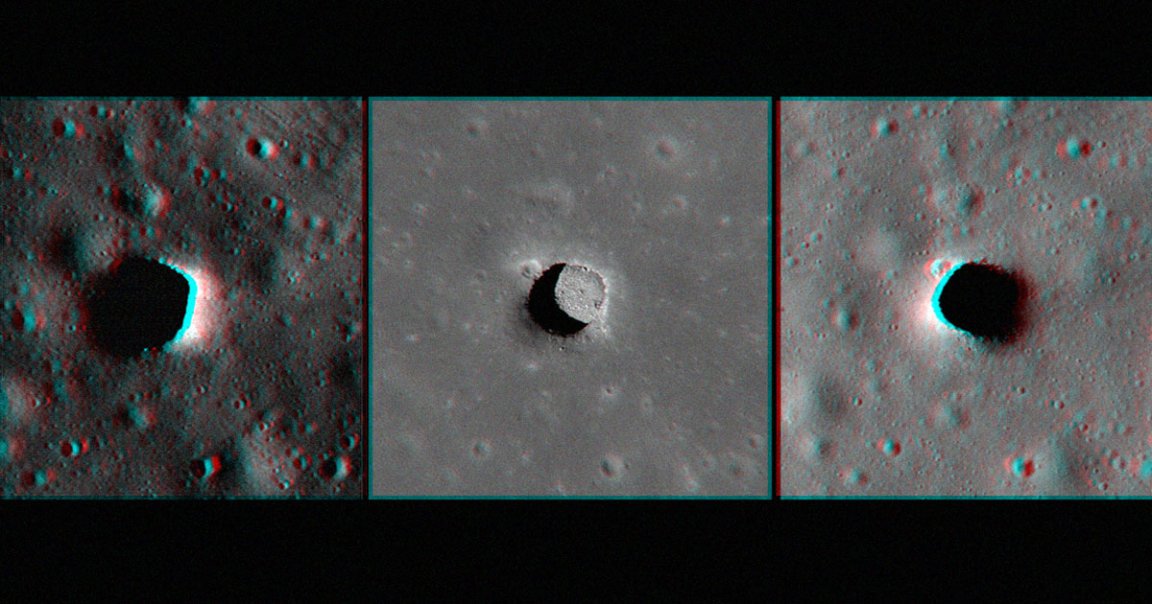
A team of NASA-funded researchers have discovered mysterious “pits“ in the surface of the Moon that sit, according to new computer modeling, around a comparatively balmy 63 degrees Fahrenheit.
In other words, these pockets could serve as an excellent place for future astronauts to hang out in, considering temperatures on the lunar surface typically range from a blistering 260 degrees Fahrenheit down to a frosty minus 280 degrees Fahrenheit. The pits could also protect future settlers from micrometeorite showers and the Sun’s relentless radiation.
There’s also the tantalizing possibility that the pits lead to more extensive cave structures left behind by ancient lava flows, something scientists have suspected for a while but haven’t been able to confirm.
“About 16 of the more than 200 pits are probably collapsed lava tubes,” said Tyler Horvath, a doctoral student in planetary science at the University of California, Los Angeles, and lead author of a new paper published in the journal Geophysical Research Letters, in a statement.
Horvath and his colleagues used data collected by NASA’s Lunar Reconnaissance Orbiter (LRO), which has been taking detailed measurements, including thermal images, of the lunar surface since 2009.
“Lunar pits are a fascinating feature on the lunar surface,” said LRO scientist Noah Petro, in the statement. “Knowing that they create a stable thermal environment helps us paint a picture of these unique lunar features and the prospect of one day exploring them.”
Scientists are certain that at least some of these pits feature overhangs, with lava tube caves perhaps lurking beyond them. If the theory holds up, the caves could serve as excellent shelter for future settlers — and the pits could be an easy way in.
The team suspects the fact that these pits are shaded from the Sun allow them to be at a steady human-friendly temperature, trapping heat during the night, while protecting from too much heat during the day.
Researchers are already coming up with ways to explore these suspected lava tubes on the lunar surface using robots and drones.
The European Space Agency is also exploring ways to uncover the Moon’s subterranean secrets, from dispatching remotely operated vehicles to crewed missions.
It’s a tantalizing glimpse of what it could one day be like to settle the Moon, as these pits may be the best place to look for a place to survive.
“Humans evolved living in caves, and to caves we might return when we live on the Moon,” said study coauthor David Paige in the statement.
READ MORE: NASA Spacecraft Finds Pits on the Moon That Always Hover Around a Comfortable Temperature [NASA]
More on lava tubes: NASA Spots Deep, Strange Hole on Mars